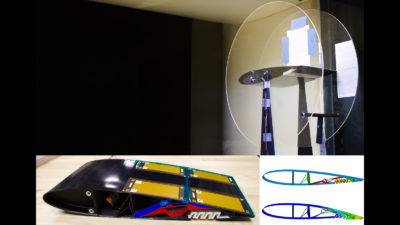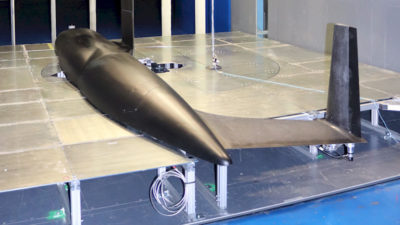Studies yield hopeful results for saving fuel, meeting performance goals
By Jonathan S. Litt|December 2020
The Inlets, Nozzles and Propulsion Systems Integration Technical Committee focuses on the application of mechanical design, fluid mechanics and thermodynamics to the science and technology of air vehicle propulsion and power systems integration.
Between February and April, North Carolina-based Blue Force Technologies conducted a parametric study exploring shape characteristics appropriate for meeting common inlet design requirements. This study focused on inlets using serpentine (i.e., offset) diffuser shaping for low radar cross-section. Cost, complexity, size and radar cross-section are important constraints when designing relatively compact air intake systems with total pressure recovery and distortion characteristics suitable for existing commercial turbofan engines. Secondary flow features often migrate and coalesce within serpentine diffusers and are difficult to attenuate once they are established. The resulting flow defects persist to the engine face, impacting engine performance and operability. The methodical survey provided information about the secondary flow features within the diffuser and the design parameters that have the most influence on them, including diffuser length, centerline offset, aspect ratio distribution and area distribution. The study resulted in a database useful for the design of fixed-geometry, short-length, low-cost inlet systems capable of meeting a broader range of performance and operability requirements.
Clean Sky 2, the European program that promotes the development and testing of hybrid electric propulsion technology for 2035-era short- to medium-range airliners, announced multiple achievements by its research partners in the first half of the year.
In January, a research team from ONERA, the French national aerospace research center, announced results from a multidisciplinary design and performance analysis of a hybrid electric distributed propulsion concept known as DRAGON, or Distributed fans Research Aircraft with electric Generators by ONERA. DRAGON is an A320-like electrically powered aircraft concept using distributed fans along the wingspan on the pressure side in the rearward position. DRAGON is being used to mature transonic distributed electric propulsion. Results indicate 7% fuel burn reduction for a 2,750-nautical-mile (5,093-kilometer) design mission relative to a conventional configuration.
Also in January, NLR, the Netherlands Aerospace Center, announced results from an energy optimization study of a parallel hybrid electric propulsion system architecture retrofitted to a 150-passenger short-range Airbus A320neo, or new engine option, reference aircraft. Using a parametric system model and tool chain for HEP performance analysis and system optimization, NLR estimated reductions in fuel and total energy consumption of up to 7% and 5%, respectively, for short-range missions.
In June, DLR, the German Aerospace Center, shared results from two key studies. The first study involved an overall assessment of a hybrid electric A320 aircraft design concept. The assessment covered three variants, all powered by turbofan engines and electric motors, which aid the off-design engine operation in taxi and descent; the motors utilize electric power generated by solid-oxide fuel cells and a booster battery. The propulsion system architecture was designed to reduce fuel burn for off-design idle engine conditions, which accounts for about 10% of the total fuel consumption of the global A320 aircraft fleet. Off-design performance optimization resulted in estimated fuel savings of 4% to 9%. The second study involved an energy efficiency comparison between a partially turboelectric, boundary layer ingesting short-range aircraft concept and a conventional turbofan-engine-powered aircraft. The partially turboelectric concept utilizes a rear fuselage-mounted BLI inlet/fan driven by an electrical motor powered by two wing-mounted turbofan engines. DLR optimized the thrust fraction of the rear BLI fan for two powertrain technology levels (standard and advanced). Researchers observed block-fuel savings smaller than 2%.
Contributors: Tim Conners, Morgan Funderburk and Dyna Benchergui



































